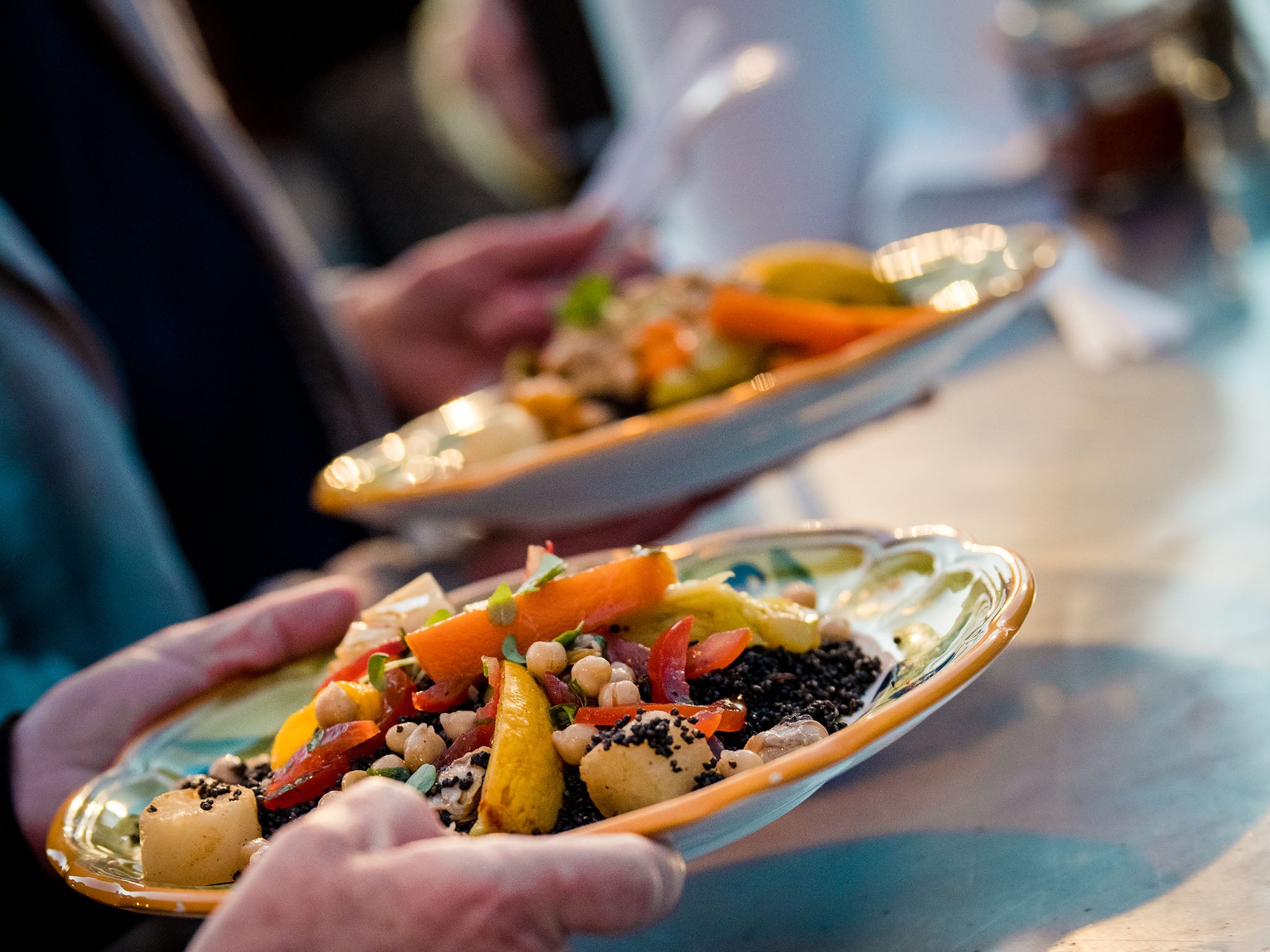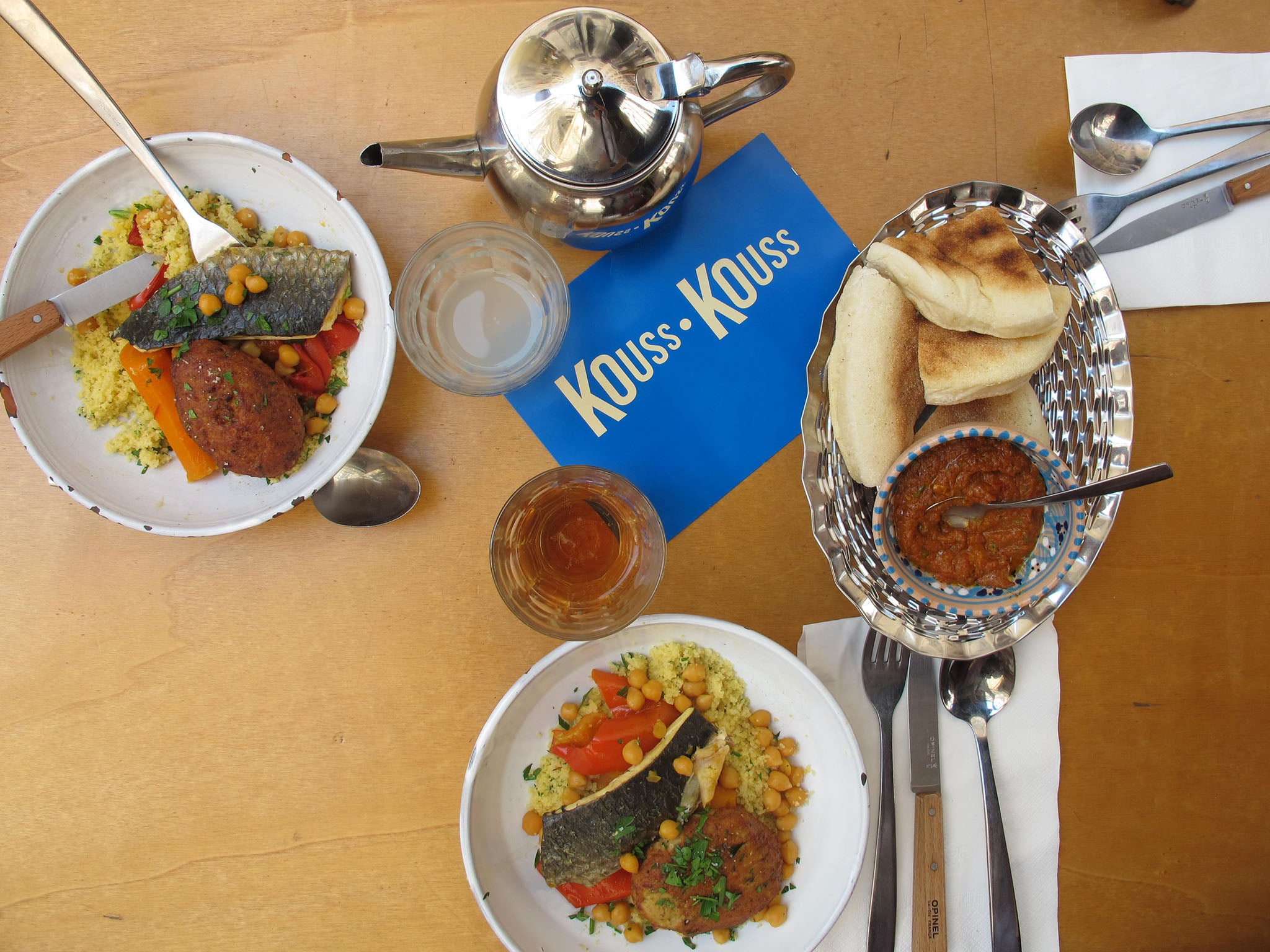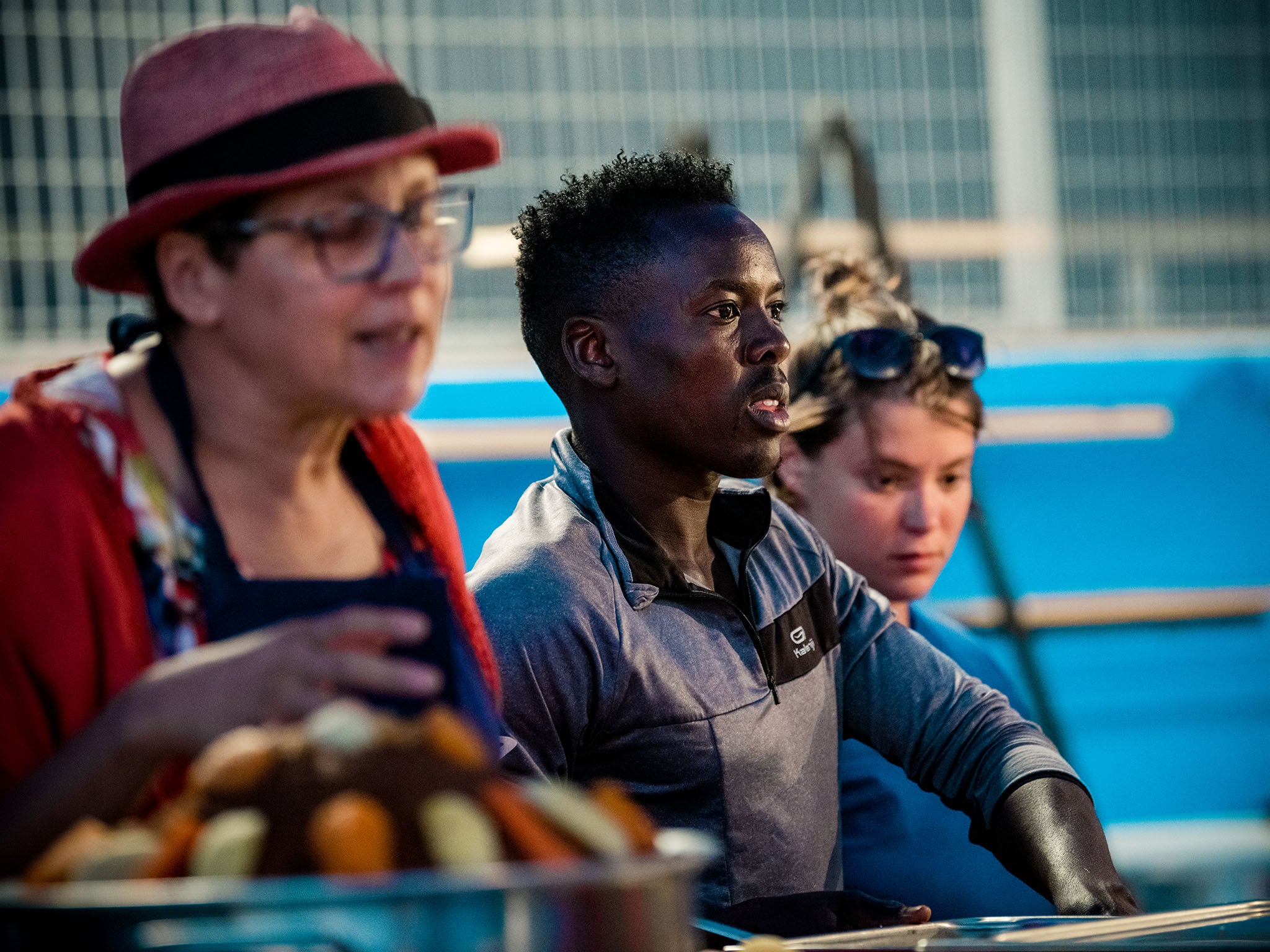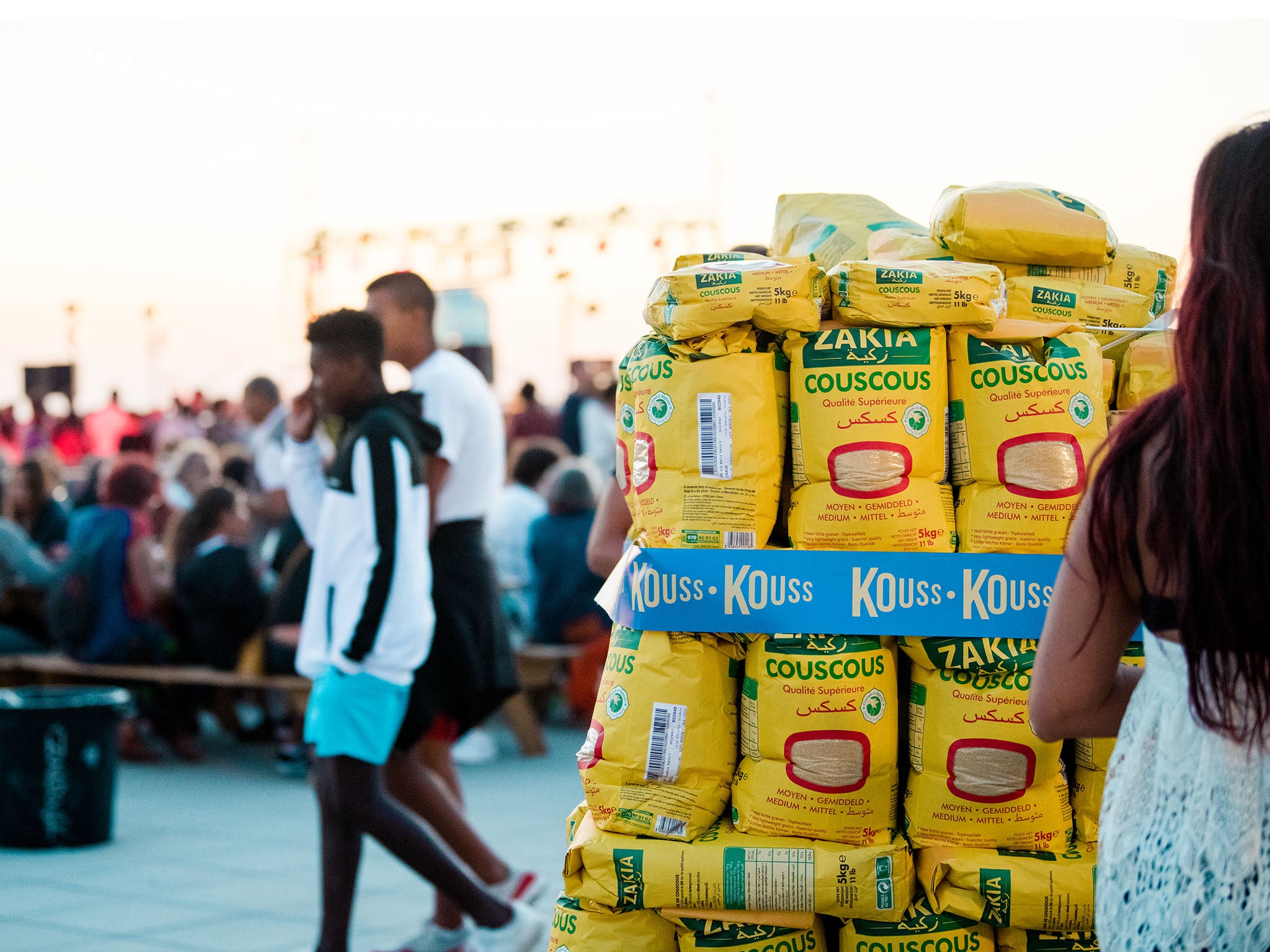How a new wave of couscous celebrations are changing the humble dish
With a rich 2,000 year history as a crossroad between Africa and the West, the staple food is now being celebrated and modernised with festivals around Europe. Just don't confuse it with semolina

Your support helps us to tell the story
From reproductive rights to climate change to Big Tech, The Independent is on the ground when the story is developing. Whether it's investigating the financials of Elon Musk's pro-Trump PAC or producing our latest documentary, 'The A Word', which shines a light on the American women fighting for reproductive rights, we know how important it is to parse out the facts from the messaging.
At such a critical moment in US history, we need reporters on the ground. Your donation allows us to keep sending journalists to speak to both sides of the story.
The Independent is trusted by Americans across the entire political spectrum. And unlike many other quality news outlets, we choose not to lock Americans out of our reporting and analysis with paywalls. We believe quality journalism should be available to everyone, paid for by those who can afford it.
Your support makes all the difference.La Bonne Mère, the great golden statue of the Virgin Mary overlooking the port of Marseille, has seen plenty of drama in her time. But this was surely a first: Couscousmania, 900 dinners served two nights running, and this is only a part of the brand new festival of couscous. If any city can take this in its stride, it’s Marseille, a natural contender for the world's couscous capital, with a rich 2,000 year history as a crossroad between Europe and Africa, where couscous, one of the great staples of Mediterranean cooking, originated.
And Marseille rose to the occasion, laying on an impressively diverse showcase; from entry level bowls of grain with stewed lamb and vegetables, familiar from a thousand little Algerian-run lunch places, upwards into the realms of squid ink, designer sardine-and-lamb meatballs, and onion “petals” cooked in rose water, the latter from a chef who’d served time at Pierre Gagnaire’s extravagant London restaurant, Sketch.
The weekend began atypically, on the restaurant terrace of the Intercontinental hotel, Marseille’s grandest, where executive chef Lionel Levy, known for outré concoctions such as the Marseille bouillabaisse fish stew transformed into a “milkshake”, opted instead for a traditional buffet.
Executed by one of his staff, Moroccan-born Rachida Erbib, this consisted of dozens of tajines, pastries and salads, with centrepiece platters of couscous grain, commercial rather than hand-made, as the latter is now the preserve of a dwindling number of ultra traditional households. And to accompany the couscous and the obligatory vegetables in bouillon, is lamb – stewed, in meatballs and sausages, grilled on brochettes, barbecued mechoui-style kind of lamb.
The key to a good couscous, according to Ms Erbib, is simply good ingredients, which not all Marseille restaurants afford, she added a touch dismissively. Undoubtedly true, though some of the €8 (£7) couscous available around town manages to taste pretty good for a tenth of the price of the Intercontinental buffet. Whatever, outstanding memories from the blizzard of tastings which filled the ensuing 48 hours include a Kabyle barley couscous with milk sauce and haricot beans, a couscous of octopus, a dish with merguez sausage, supions (Marseille’s favourite baby squid) and two sorts of chickpeas, a sweet couscous with raisins, lemon zest and nutmeg. Luckily, all are perfectly cooked, because internal rupture due to grain swelling would be a nasty death.

Some three dozen chefs and restaurateurs contribute to the weekend festivities, with special menus and couscous dishes served around town, debates and broadcasts (Louise Lextrait)
Kouss Kouss – Couscousmania is in fact its subtitle – was born of musical as much as culinary inspiration. The festival was the brainchild of Fabrice Lextrait, director of Les Grandes Tables, a large-scale catering and events operation based in the Friche de Belle de Mai, the big arts and leisure complex housed in abandoned warehouses and loading yards behind Marseille railway station. The nub of the event was a performance by an intermittent super-group, named the Cous Cous Clan for no particular reason, and centred around the Algerian-born rockstar Rachid Taha (who tragically died of a heart attack shortly after the festival). Around this core, some three dozen chefs and restaurateurs contributed to the weekend of mass feasts on the enormous flat roof of the Belle de Mai, special menus in restaurants around town, debates and broadcasts. Fatema Hal, the Parisian restaurateur and author, and, sort of Moroccan-born Nigella Lawson, were both on call to plan menus and discuss couscous lore.
Which is not simple. For one thing, the grain itself – milled durum wheat rolled in flour and steamed – is often confused with semolina, the much finer wheat powder used for desserts and pancakes. For another, the dish’s origins are convoluted. The primary impetus for couscous’ elevation to second or third most popular dish in France was the arrival first of Algerian workers from France’s then-colony and secondly, a few decades later, the million pied noirs, French-origin Algerians, who fled Algeria after independence in 1962. But the Berber tribes of North Africa introduced couscous into the empires of Romans and Arabs, and early references to couscous are found from Islamic Andalusia, through the works of the 16th-century French writer François Rabelais to medieval Italy.
So while Marseille’s couscous festival is the world’s latest, it’s not the first. There may well be other traditional celebrations below the media radar, but on an international level the honour belongs to San Vito lo Capo in Sicily, while a new contender, set in Algiers, took place in May. Unsurprisingly, couscous has just been added to the long list of candidates for UNESCO World Heritage status, jointly sponsored by the culture ministries of Morocco, Algeria and Tunisia – the dish’s major homes.
The San Vito festival, whose 21st edition opens this weekend, exploits Italy’s own relationship with North Africa, which is not colonial but geographic. Sicily, and its satellite mini-islands, are a short sail from Tunisia, and the fish couscous, which is Tunisia’s speciality, is also popular in Sicily. The link is not just theoretical: researching the SiciIian connection, I came across a tableful of Tunisian fishermen on the tiny offshore island of Pantelleria, tucking into a copious fish couscous as if to camera for a food TV documentary, washed down with wine out of a jerrycan. I also came across Giorgio Armani’s personal couscous cook, but that’s another story.

Like the Marseille event, San Vito’s festival also involves music – a series of increasingly pop-oriented outdoor concerts – but also regional pavilions and stands, demonstrations, tastings and a competition. The food is very good, especially from the jolly-crowded fish restaurants, which line the avenue leading to the beach. I recall an exquisite couscous with a rich sauce of sea urchins in one. At this year’s San Vito there’s a chef from Angola, an extremely rare sighting, as even West Africa, the commonly cited home of sub-Saharan couscous, is little represented in Europe. Marseille’s line-up however boasted a young chef named Gagny Cissoko from Mali, who offered not the meat-topped millet couscous typical of his region, but a very Eurocentric, and delicious, combination of the classic wheat grain topped with bouillabaisse.

And where is the UK in all this? Rather on the sidelines, due to the absence of a colonial relationship with North Africa. The British home scene comprises lots of restaurants, often Lebanese, serving couscous as an ingredient on a menu of wider provenance, but still few purely North African ones, where the dish is central, in spite of a crop of little Moroccan bistros with recently added terraces for smoking shishas. The earliest couscous pioneer I can recall, was a mid 80s London pop-up far ahead of its time off Carnaby Street, run by a moonlighting Tunisian engineer. This was a decade and a half before Momo, the first UK venture of the Algerian restaurateur Mourad Mazouz, which built on the earlier success of his 404 in Paris, one of the leaders in fashionable French couscous in the 90s.
In Marseille, the banner of British couscous was actually borne with great aplomb by a Londoner named Harry Cumings, veteran of well-received French pop-ups across France, and one in the labyrinthine medina of Fez, Morocco, where the butane cylinders were delivered by donkey and the meat on a porter’s head. Cumings’ latest is La Mercerie, a former haberdashers shop, where he offered a classily-discreet couscous, spare in ingredients, but with each one, from the top quality rolled oven baked lamb shoulder to the little glazed turnips and the veal stock-enriched couscous itself treated to painstaking individual cooking.
Interestingly, neither Cumins nor any of the other gastronomically ambitious chefs in Marseille would normally have considered couscous for their menus. “It’s a family dish” said the Intercontinental’s Levy, “just not what my clientele expects”. But the hedonistic Sicilian gourmets, and nouveau Provencale couscous fans, may just be moving the dish upmarket.
The clearest demonstration was another Marseille institution, Art-0-Rama, the annual modern art salon, where smart galleries from Berlin and Geneva show mystifying installations to rich collectors. Even this milieu, surely forbidden territory for robust family grub without a pretension to its name, succumbed to couscousmania for its very soigne launch party. A couscous with four garnishes and a choice of red, black or green sauces, inspired by Delacroix and Dali, admittedly. But very welcome. The cult of couscous is a broad church, and la Bonne Mere smiles equally on all her children.
Join our commenting forum
Join thought-provoking conversations, follow other Independent readers and see their replies
Comments